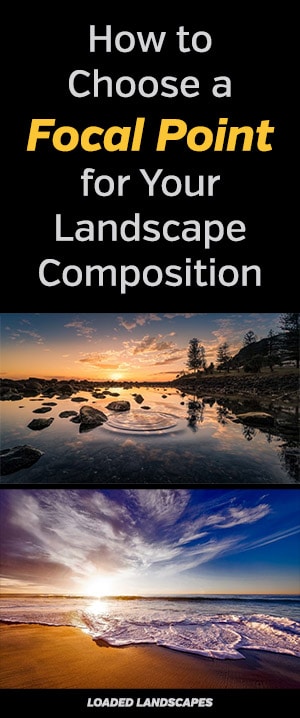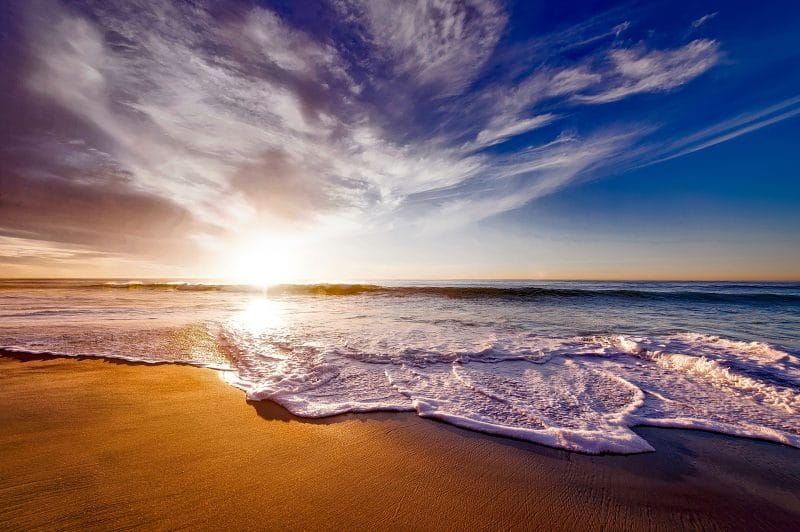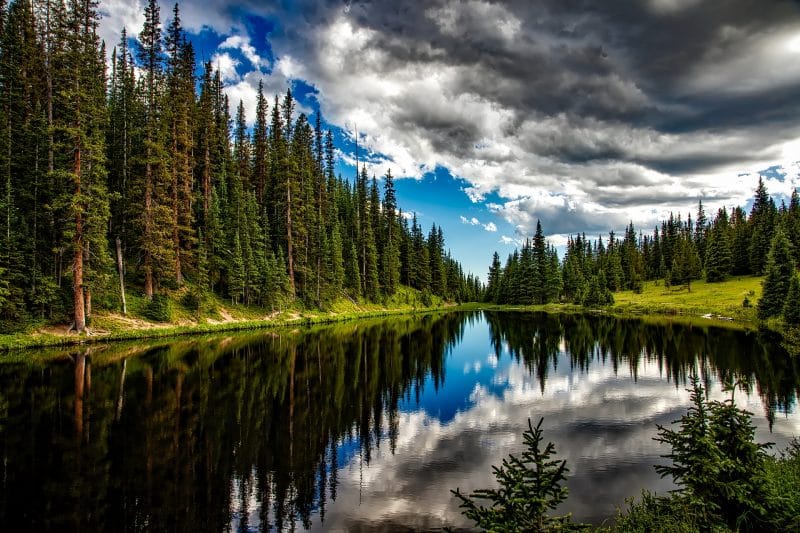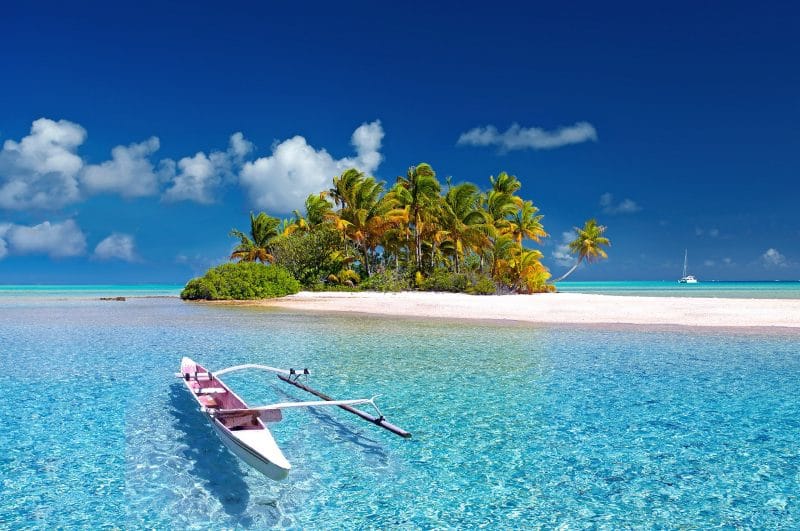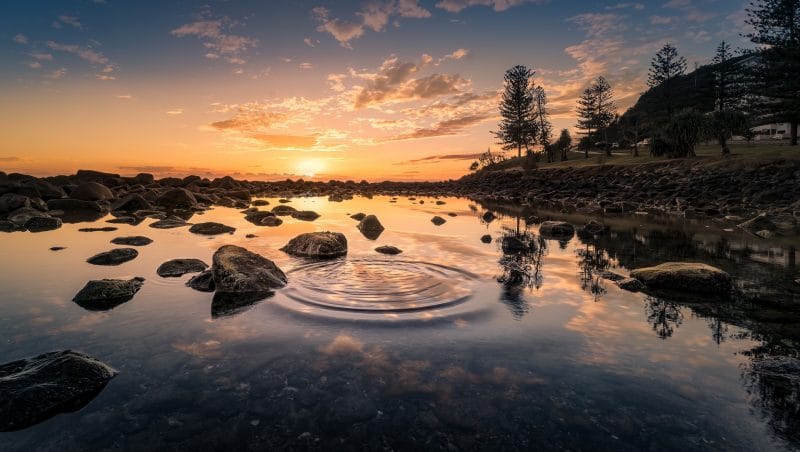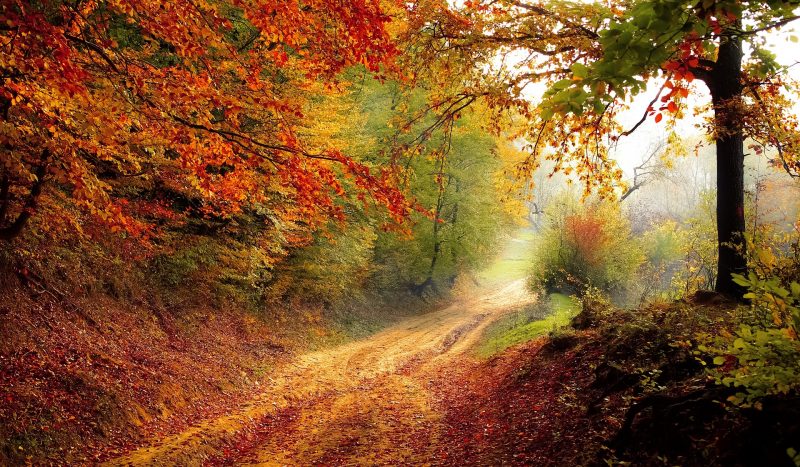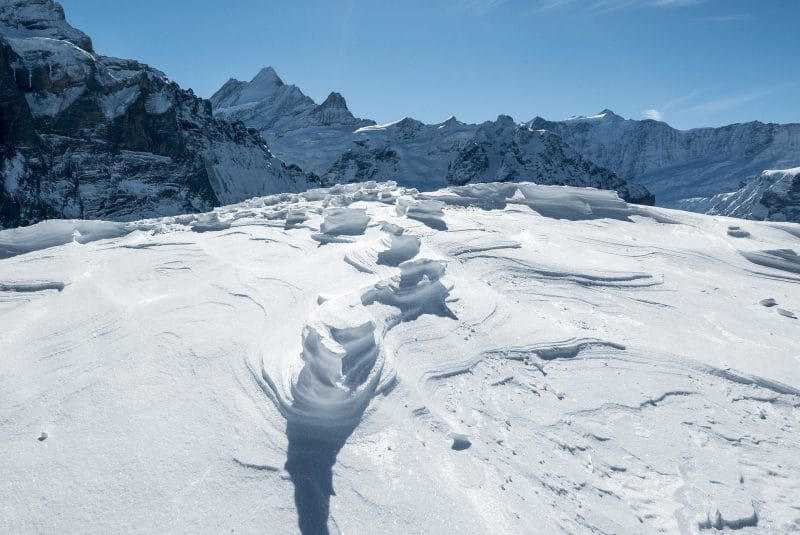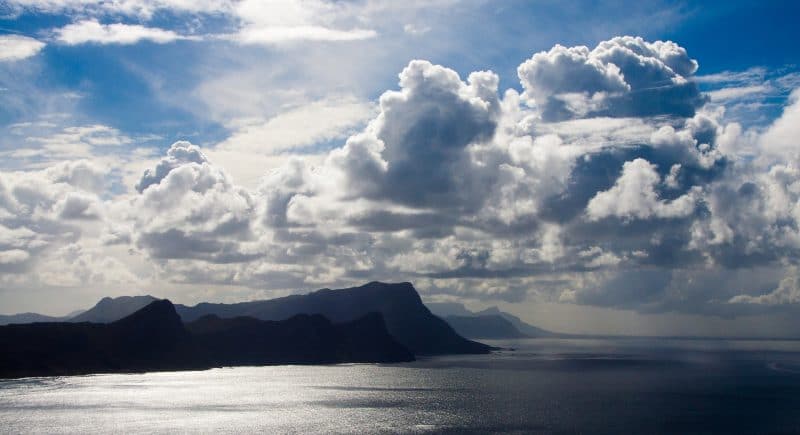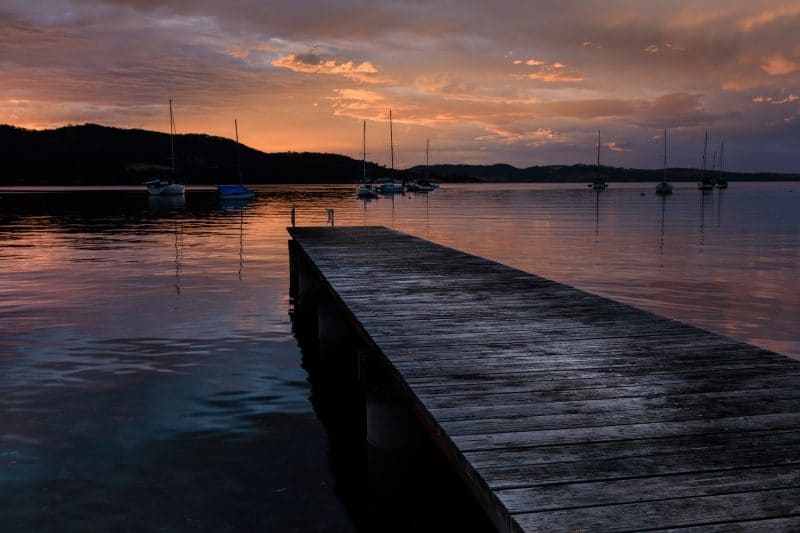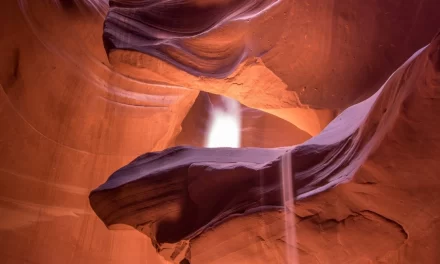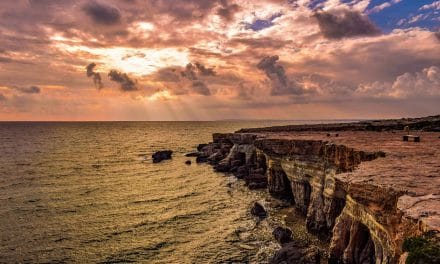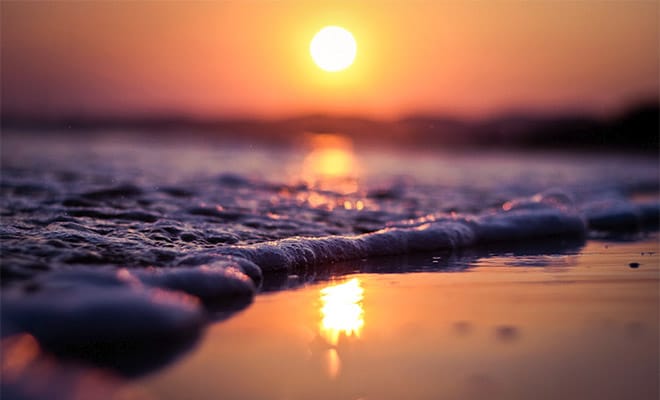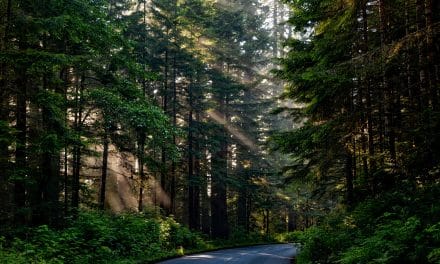When it comes to landscape photography we should consider exactly what we want the viewer to focus on and where. This sounds very…obvious. But how do we do so? There’s a certain amount of nuance that photographers don’t always take to heart when looking at a scene. So let’s explore some of these methods below so you can pick your favorite at any time.
Block Method Composition Works
Block Method Composition is a photography technique pioneered by Jim Harmer that is simple yet highly effective. Using Block Method Composition we want to ignore most of the details that tend to grab our attention like individual flowers and even individual mountains. Instead, we focus on overarching shapes that traverse the scene. In the photo below the image uses the foreground lake to form a single unit of a rough shape. The lake suggests a triangle near the point where the land and sky seem to meet. From there, the midground forest creates two obvious triangles. And the sky forms the third triangular unit in this visually striking composition.
Add Foreground Points of Interest
Landscape photography is often all about the expansive view, the big sky… In other words, we as photographers put tons of attention on the background of the photograph. The foreground is often used to add spaciousness to our panoramic view. But that’s not the only way to use the foreground in landscape images.
Imagine the above image without the kayak. While the scene is undeniably idyllic and beautiful, with the boat there’s a story being suggested by the human artifice. Are we at a vacation spot? Or maybe an indigenous fisherman is taking a break for a swim. The dynamic of the photograph is immediately altered by composing it with a foreground point of interest without taking away from the background landscape at all. Even the simple ripples of a stone cast into a pond gives the foreground a bit more play.
→ Related reading: How to Use Foreground Elements in Compositions
Frame the Scene with Foreground Points of Interest
This is similar to the previous suggestion but can be simpler depending on the scene in question. With foreground framing, we want to use elements that take up most or all of an edge to add interest to the foreground.
In the below image we could create a landscape using a clear view of the trees along the road and the path itself. But by framing the photo with limbs and leaves along the top the photographer creates a strong forest ambiance for the viewer. Instead of viewing the forest we feel like we’re inside of it looking out.
The Golden Ratio
Since this is an article about composition it’s almost impossible to go without mentioning the Golden Ratio. Like the Rule of Thirds, it’s a time-honored technique for a very good reason. The idea is to guide the eyes of your subject along the mostly imaginary track as displayed here. We want our points of interest to fall as close along the lines of the spiral as possible, with the main subject or point of action to be happening at the spiral. The result is an innately pleasing photograph that gains a certain sense of action.
In the image below we can see this principle at work clearly if we mentally flip the spiral pattern from above. The foamy waves breaking on the shoreline cause the eyes of the viewer to track to where the clouds meet and arc across the sky. We then tend to go from there straight into the bright heart of this nautilus shell: the sun. Say the photographer had composed the landscape with no Golden Ratio focal point and simply left the sun in the middle of the frame and the waves coming straight on. It would look flat and typical in contrast to this more subtle composed image.
Raise or Lower The Horizon
When composing an image, give thought to the placement of the horizon as it can make or break the flavor of the image. This touches on the Rule of Thirds, another standard component to photography composition. By raising the horizon we can emphasize the foreground even more and cause most or the entire area to become a point of interest. In the below image by raising the horizon we are made to feel we’re the ones on a journey towards the mountains in the distance.
Alternatively, we can de-emphasize the foreground by aligning the horizon along the lower horizontal line of the Rule of Thirds grid or even lower. This allows the background to leap out at us without competing for attention. This works especially well when composing images where the sky is the focal point. Many modern interchangeable lens cameras have Rule of Thirds grids either selectable as an LCD or EVF option or built right into the optical viewfinder.
Conclusion
Composition plays a dramatic role in landscape photography that can sometimes be overlooked. If we consider simply the beauty of the scene we may compose our images in ways that actually take away from it. Conversely, if we use our knowledge of composition we can tell all sorts of dramatic stories with minimal effort! It pays to think on focal points in landscape composition.
